During our 3 week stay in Cividale del Friuli, we were lucky enough to be able to visit the surrounding areas with our rental car. One of my favourite places was definitely Trieste.
Trieste is the main city of the Venezia Giulia region. It is situated at the easternmost corner of Italy, on the Adriatic Sea and right at the border with Slovenia. This area has a distinct style, culture, and history that is quite different from the rest of mainland Italy.

HISTORY
Trieste used to be part of the Roman Empire, so you will see quite a few Roman ruins around town. Later on, Trieste became part of the Austro-Hungarian Empire which deeply influenced the local culture and traditions. The Austrian influence can be easily seen in the city’s architecture. In fact, there are times you feel like you are walking around Vienna instead!
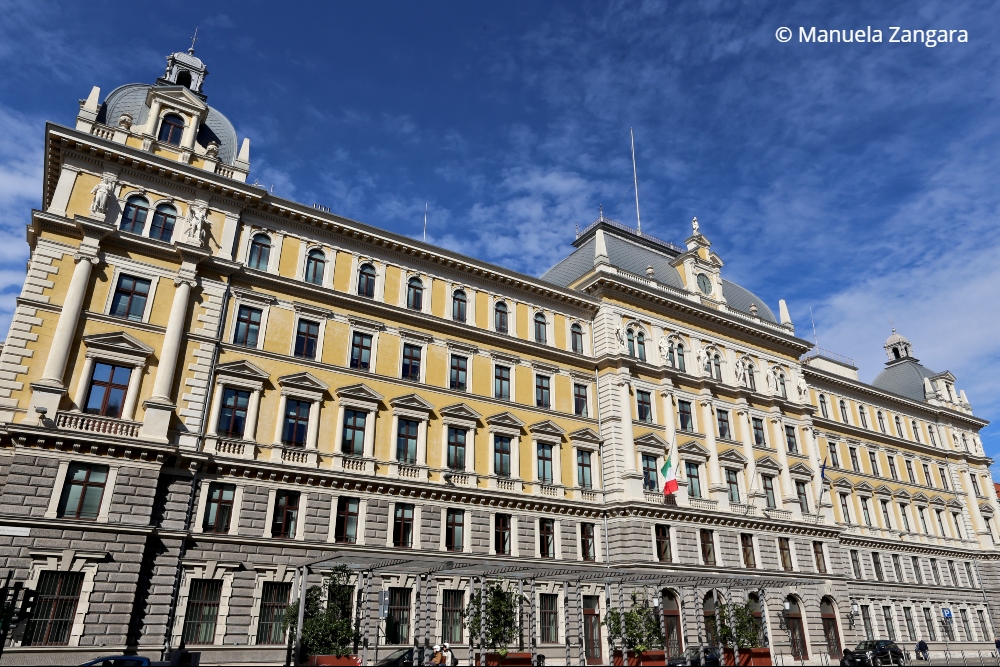
At the beginning of the 20th century, Trieste was a cosmopolitan city frequented by artists such as James Joyce, Italo Svevo, and Umberto Saba, just to mention a few! They regularly visited its literary cafés hence making the city the cultural and literary centre of the so-called “Austrian Riviera”.

After WWI ended and Austria-Hungary disintegrated, Trieste was transferred to Italy in 1920. This, however, determined a loss of importance for the city, both strategically and commercially. During WWII, the German Nazi Regime occupied Trieste and, as a consequence, the Slovene ethnic group (at the time about 25% of the population) and the Jewish community suffered racial discrimination. This culminated in their deportation to the only Nazi concentration camp on Italian soil: Risiera di San Sabba.


After WWII, Trieste was split into two zones: Zone A under the American and British government and zone B, under Yugoslav forces. In 1954, after a national referendum, the city of Trieste and Zone A were handed over to Italy, while Zone B was given to Yugoslavia.
VIDEO HIGHLIGHTS
SIGHTSEEING
Trieste is unlikely to be at the top of any tourist list. It definitely lacks the kind of recognition you’d find with Florence, Venice, Rome, etc. And yet, you surely won’t be disappointed with the various sights to see here.

Piazza Unità d’Italia
This colossal square lies at the forefront of the historic old town and faces out towards the Adriatic Sea. It is definitely one of the symbols of Trieste.

Several important buildings line the square including the Town Hall, the Palazzo del Lloyd Triestino, the Palazzo del Governo, and the Palazzo Pitteri, each of which features stunning architecture.
Molo Audace
The Molo Audace is a fascinating promenade in the heart of Trieste and sits directly next to the end of Piazza Unità d’Italia.
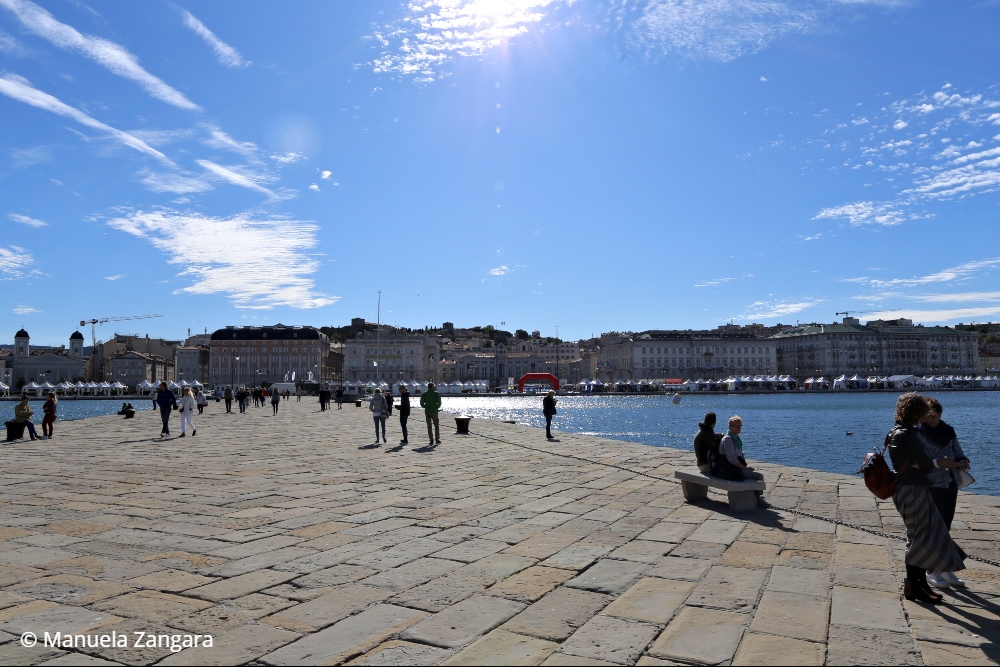
Stretching out towards the sea for approximately 300m, this stone-paved promenade allows tourists and locals alike a place to admire the coastal scenery of Trieste.

From here you can look out to the sea, admire the extensive port system and the skyline of Trieste, and also take some fantastic photographs.
Piazza della Borsa
Located next to the Piazza Unità d’Italia, Piazza della Borsa is just as interesting.
During the 19th century, this square actually served as the city’s economic centre and the chamber of commerce building is actually located at the far end and features a beautiful columned entrance with an ornate marble pediment.
Triangular in shape, at the end closest to the Piazza Unità d’Italia, there are several restaurants and shops, whilst in the middle is a decorative statue of the sea god Neptune.
Canale Grande
Located in the heart of the historic old town, not far from the Piazza Unità d’Italia, the Grand Canal is a small waterway that has existed since the 1700’s to allow boats direct access into the city to unload their cargo.

This pleasant waterway is crossed by three bridges and has numerous boats moored at each side.
Chiesa Parrocchiale Sant’Antonio Taumaturgo
Near the Grand Canal, the Chiesa Parrocchiale Sant’Antonio Taumaturgo is hard to miss. Even though it was only built in the 19th century, the neoclassical design of this church and the huge fountain built in front of it really help it stand out.

Serbian Orthodox Church of Saint Spyridon
Elegant 1700’s church and spiritual home for the Serbian Orthodox community of Trieste.
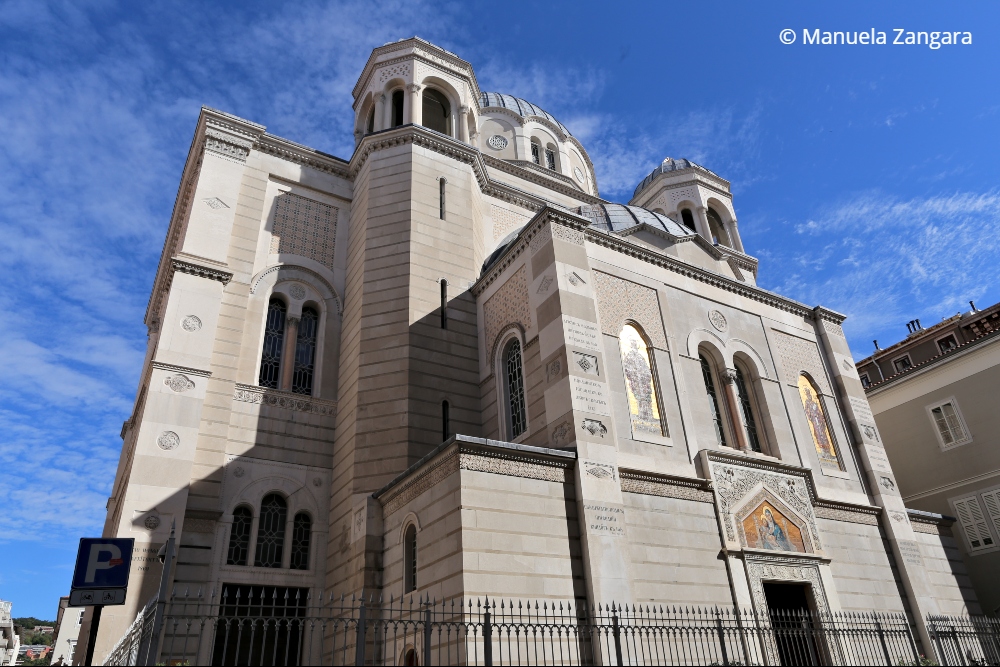 ‘
‘

The inside is just as beautiful!


Synagogue of Trieste
Designed by architects Ruggero and Arduino Berlam and opened in 1912, the Great Synagogue of Trieste is one of the most impressive synagogues in Europe. It is a typical example of a synagogue of the emancipation period, for its monumental character, oriental influence and interior layout, and proves the importance achieved by the Jewish community in the economic and cultural life of the city.
We couldn’t visit it unfortunately as couldn’t make it in time for the visiting hours, however, I’d recommend a visit, especially if you are planning to visit the Risiera di San Sabba.
Trieste Roman Theatre
On the Via del Teatro Romano, you will find a beautifully preserved Roman theatre. You can still see the original seating and stage area together with various columns and walls!
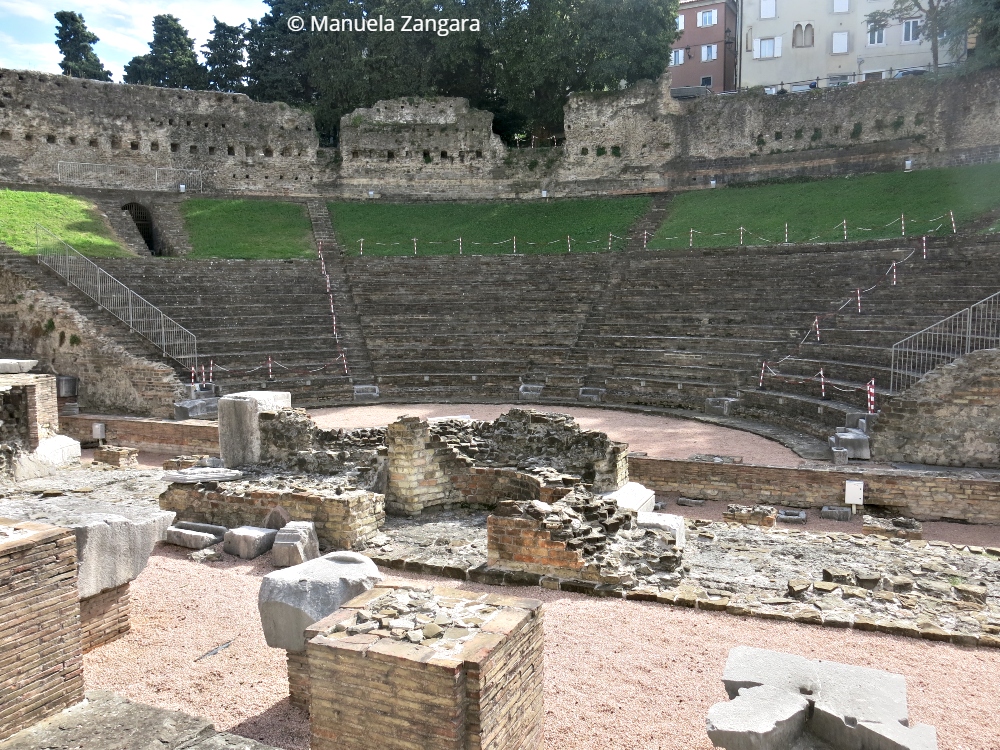
Castle of San Giusto
Located next to Trieste Cathedral, the Castle of Saint Giusto is an ancient structure that has stood for many years and is one of the cities icons.

This structure now serves as a museum and was originally created in the 15th century by the Hapsburgs. Built on the Capitoline Hill, the castle has a commanding view over the city and has an extremely strategic location.
Inside the main keep, there is a fine display of artifacts and information about the history of the castle including military banners, coats of arms, and an armoury with a wide variety of ancient weaponry.
Cathedral of Saint Giusto
Also known as Trieste Cathedral, this church is dedicated to Saint Justus and serves as the main church of the city.

Originally built in 1320, the church features a Romanesque and Gothic design and the front façade has a huge circular window with a beautiful lattice design.
The dome of the main altar is covered with a stunning fresco.

There are also several beautiful mosaics.
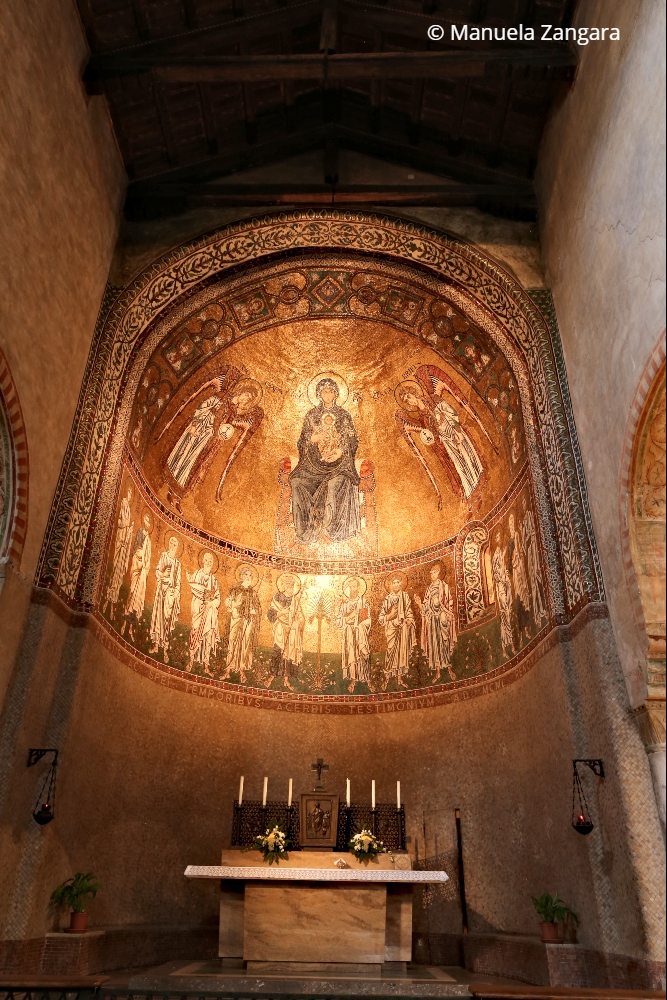
Risiera di San Sabba
Once just a local rice mill or risiera, in September 1943, the Risiera di San Sabba took a dark turn. The complex became a Nazi concentration camp, used for the detention and killing of political prisoners and Jews.
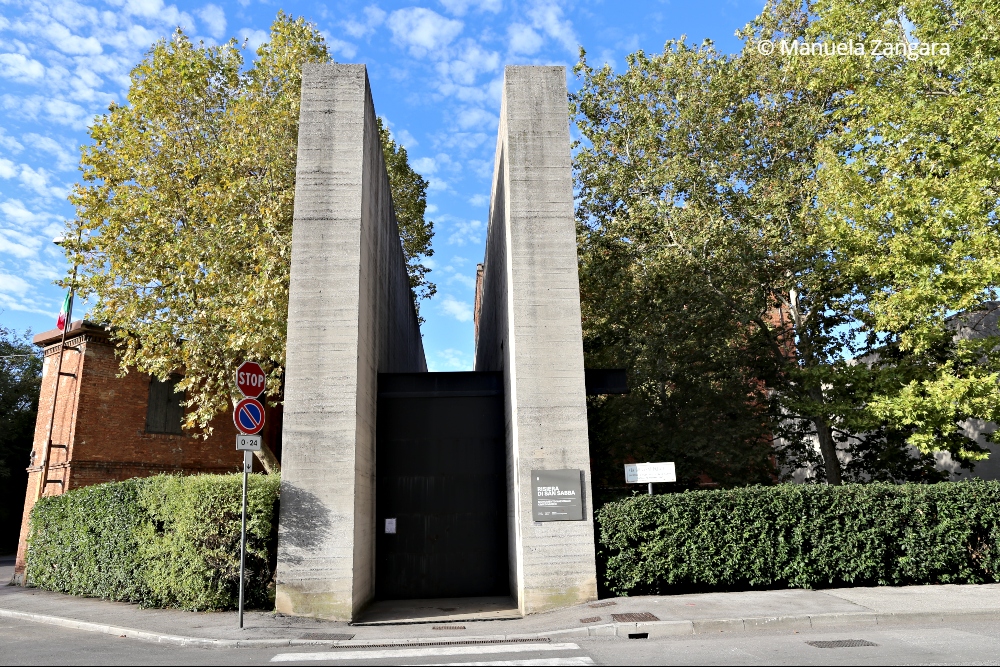
Many of the occupants kept at Risiera di San Sabba later went on to the concentration camp at Auschwitz-Birkenau. Historians estimate that over 3,000 people were killed at Risiera itself, often by cremation and gassing.

Architect Erwin Lambert, who had already constructed a number of gas chambers in Germany, Austria, and Poland, built crematory facilities in one of the main the risiera’s main buildings. In 1945, these facilities were intentionally blown up by the Germans to try and hide evidence of their crimes. In fact, San Sabba was the only Italian Nazi camp with a crematory oven.

After WWII, Risiera did not return to business as usual but became a centre for refugees. Many of them were ethnic Italians fleeing from Yugoslavia. In 1965, Risiera di San Sabba was declared a national monument, and in 1975 was renovated into a museum that guests can now visit.
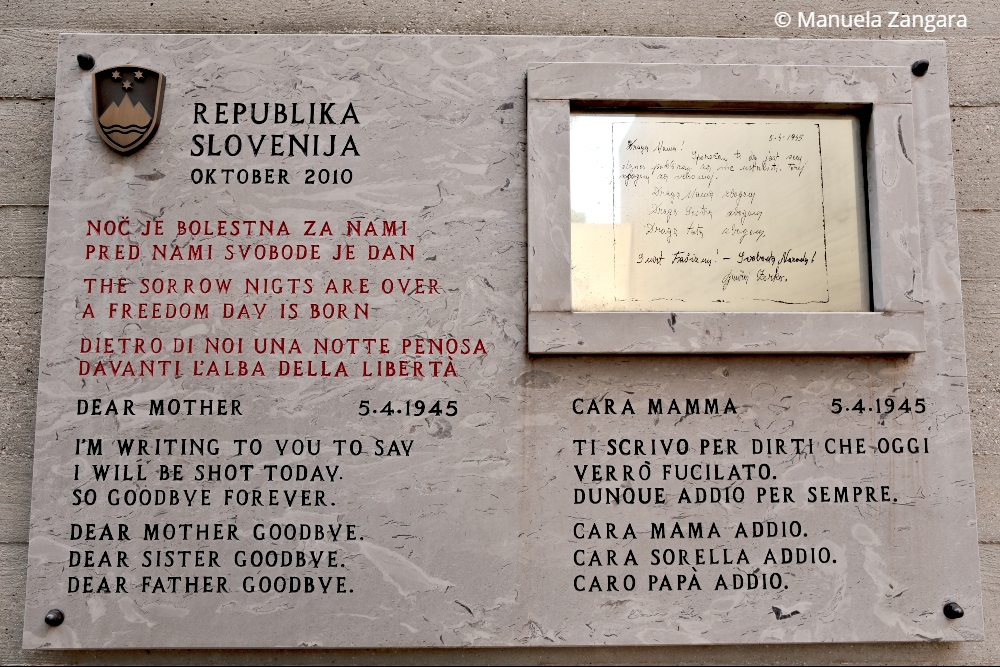
In the museum, you can see photos, documents, projects, objects given by ex-deportees, and videos.


You can also visit the 17 mini-cells that have remained as they were during the time of the camp. These were used to keep political prisoners and members of the local Resistance, as well as Jews and civilians arrested during police operations. For many, these cells were the ante-chamber of death, for others holding cells before deportation.
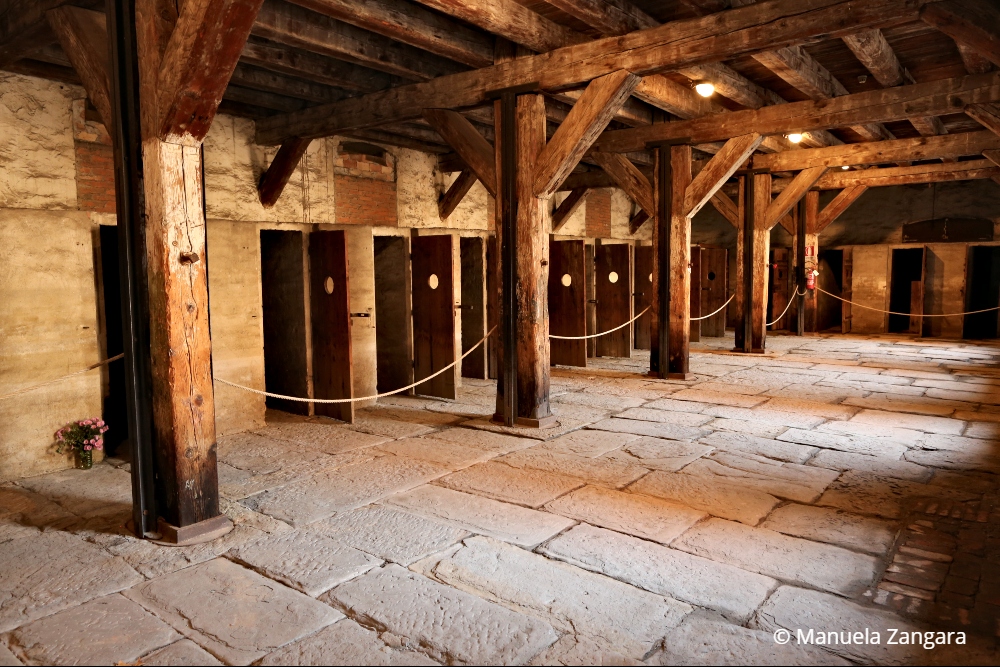

The inner courtyard, which today houses a metal sculpture and a large metal plate, was the site where the chimney was. Here there were also 2 other buildings – the ex-machine room and the ex-boiler room – where the killings took place and where the crematorium was located.

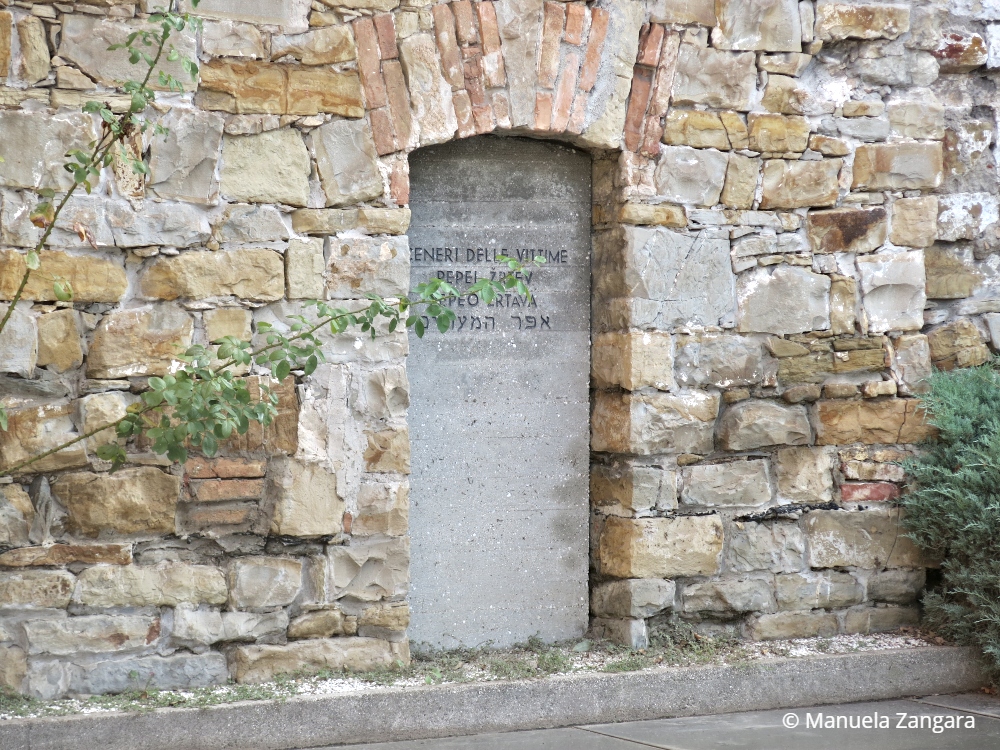

This is an absolute must-visit. This place is not as big as other concentration camps, but it is the only one in Italy and as such, it is really important. It was a very moving experience and very important especially for the kids. The audio guides are highly recommended!
Miramare Castle
A visit to Trieste just wouldn’t be complete without seeing the magnificent Miramare Castle. It’s simply the most impressive and memorable landmark of Trieste and yet it’s not even in the city. As the name suggests, the castle faces the see.


Built for the Habsburgs in the 19th century, its location was a favourite of the Archduke. You can take tours inside of its grand imperial interior if you like.
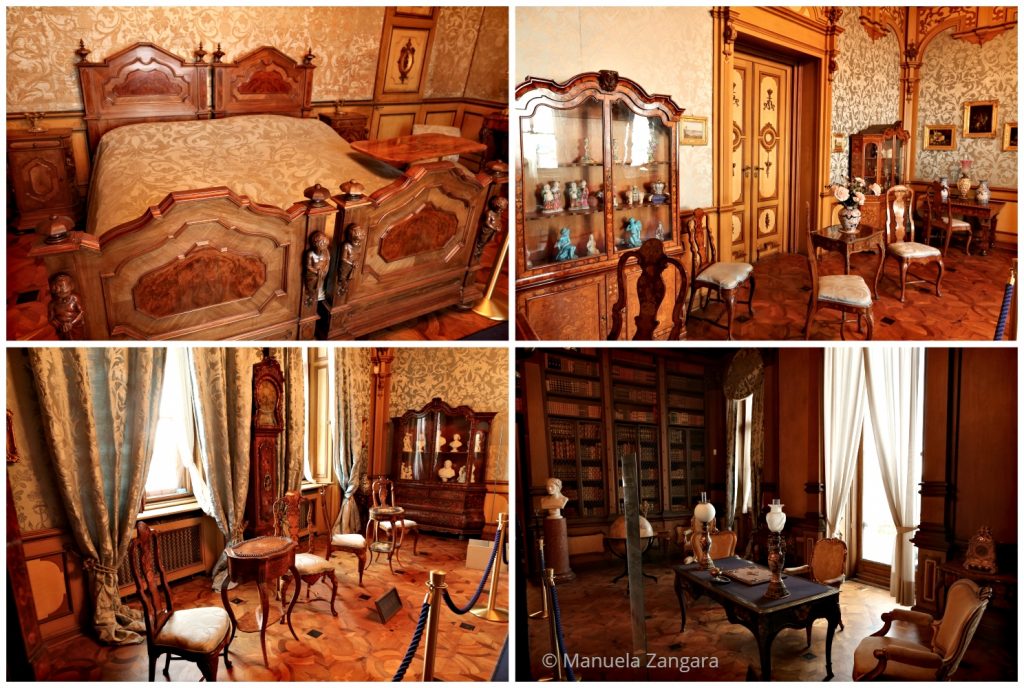
As grand as the castle and its little harbour are though, the biggest element to Miramare is the sprawling formal gardens that fill the park around it. Well worth a wander!
Due to the position that Miramare Castle faces, the sunsets here are particularly beautiful.
Duino Castle
The Castle of Duino was erected during the 14th century on the ruins of a Roman military outpost and during the 17th century it began to acquire its status as a cultural centre.



It has hosted a number of prestigious guests: Elisabeth of Austria (Sissi), the Archduke Franz Ferdinand of Austria, the Counts of Chambord, Johann Strauss, Franz Liszt, Hugo von Hofmannsthal, Gabriele d’Annunzio, Paul Valery and the poet Rainer Maria Rilke, who composed the first two of his famous “Duino Elegies” while staying at the Castle.

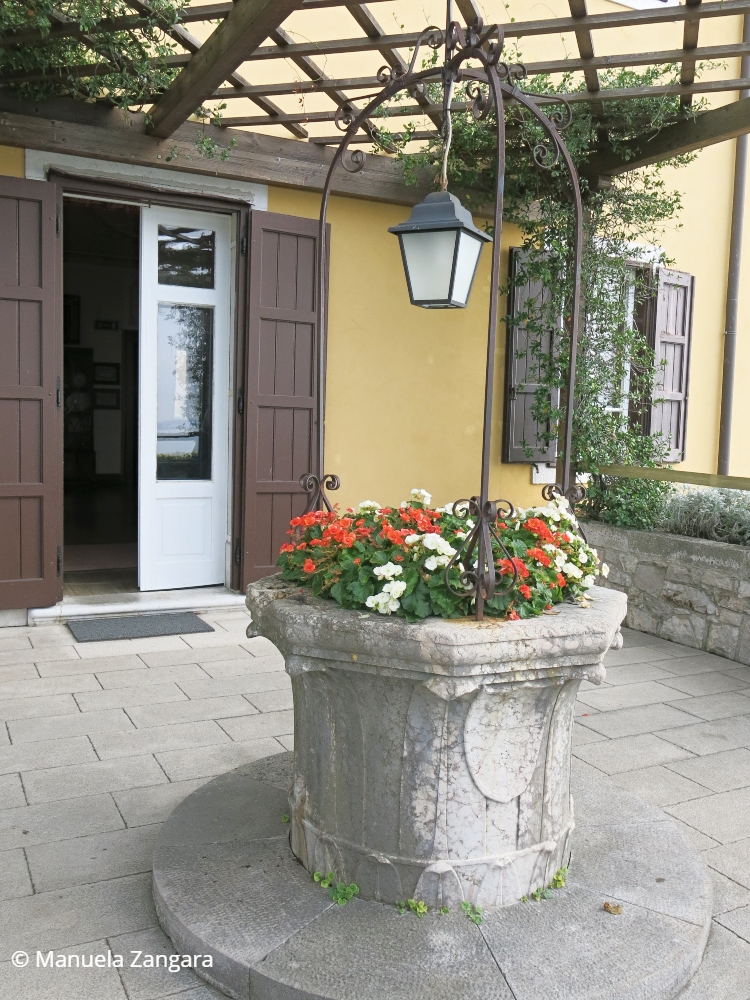
It is possible to visit more than 18 rooms of the Castle, full of testimonies telling the long history of the family of the Princes della Torre and Tasso. Not to miss the Palladio Staircase (a masterpiece of architecture!), the 1810 forte-piano (played by Liszt!).

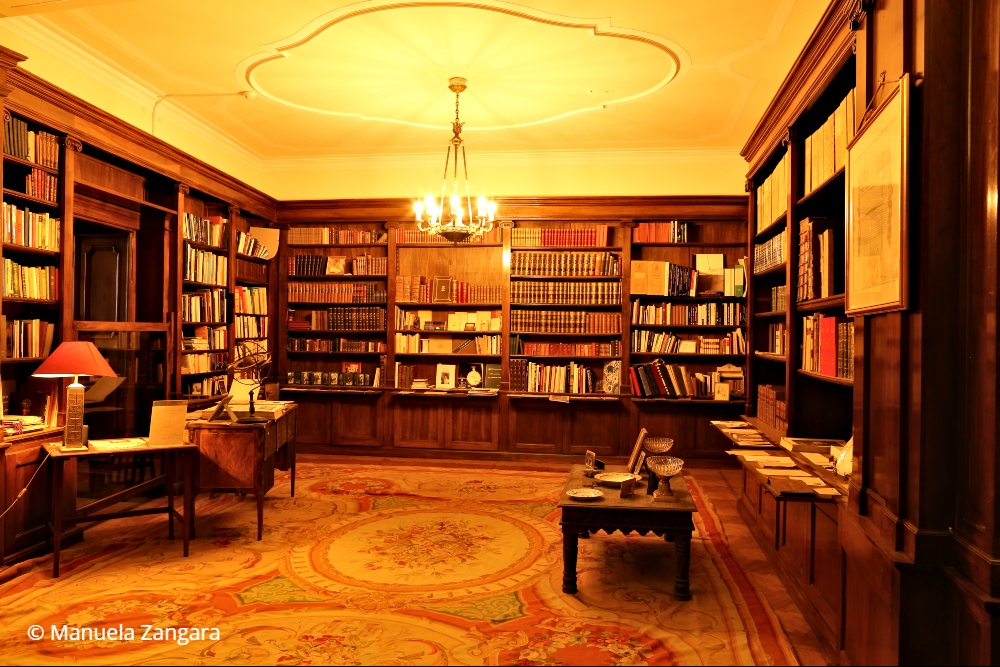
And the stunning seascape that one has from the bastions above the sea as well as from below the Diocletian tower dating back to the 3rd century AD.
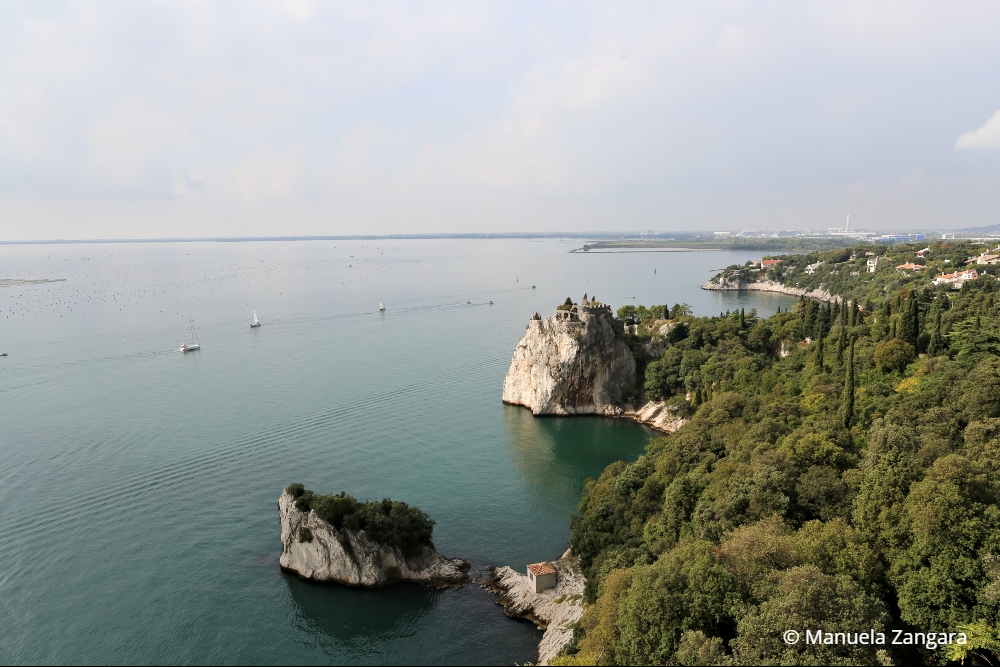


You can also visit the so-called “bunker”. It is a 400 square metre area, 18 metres underground, built in 1943 by the forced-labour organisation TODT for the German navy to defend the naval base of Sistiana against a possible Allied attack. The Bunker was also used as an air-raid shelter for the people of Duino.

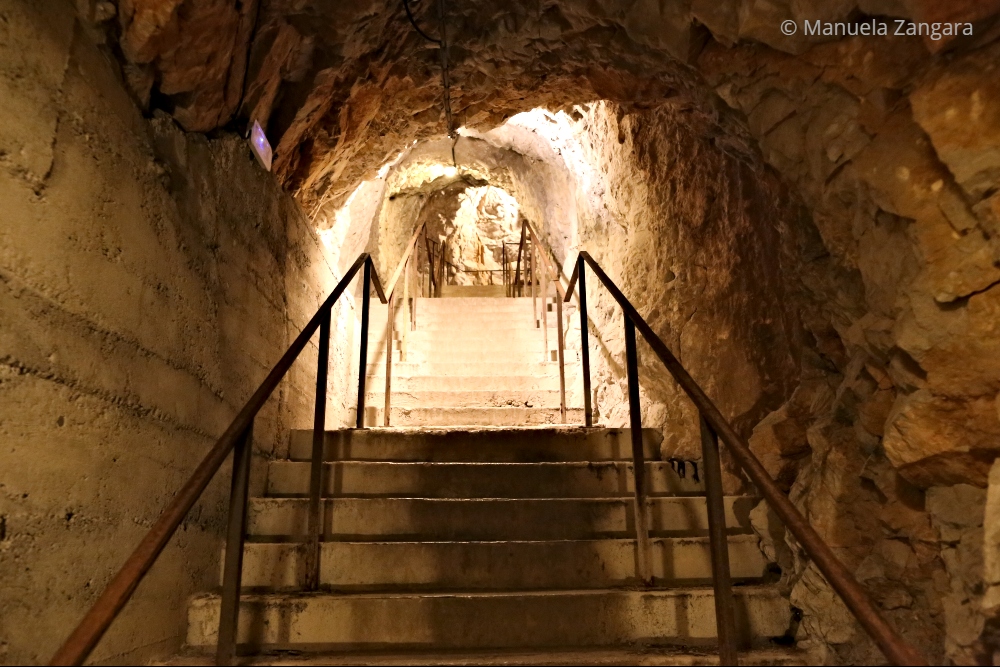

FOOD
Trieste is known for its delicious food and for its coffee (Illy coffee is from Trieste!). So, make sure to try out a few specialties.

Caffè degli Specchi
I absolutely recommend you to enjoy some coffee at Caffè degli Specchi in Piazza Unità d’Italia.
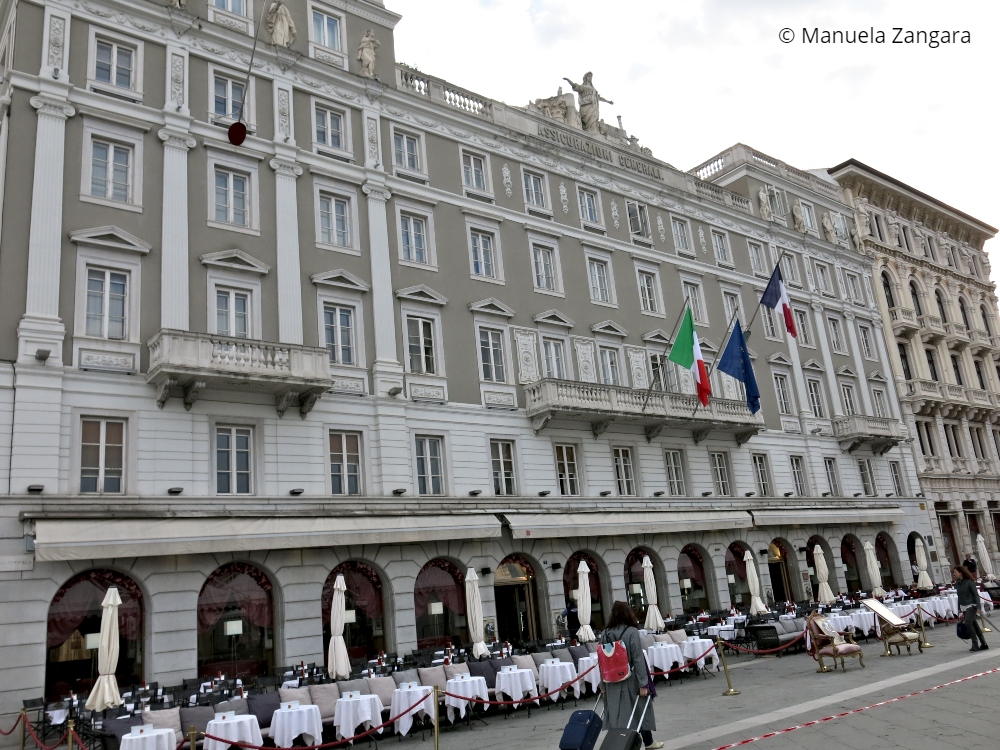
They have a huge selection of coffee, however, please do try a classic espresso or a ristretto. You can’t go wrong with those.

The coffee itself is perfect. And it also comes with a glass of water and a little glass of hot chocolate!! The girls were ecstatic!

They also have a delicious array of pastries. Do try a cornetto (the Italian croissant) or even better a bombolone/krapfen. You can thank me later!
Bianco
We had the BEST pizza EVER at Bianco’s. This pizza is the real deal, Neapolitan style, with a thick fluffy crust and the perfect ratio of topping to crust. I still dream about it. It was so good that we went back every single time we were in town!
I had a Bufala – a Margherita with Buffalo Mozzarella.

My husband had a Sausage and Mushroom pizza.

And the girls had a classic Margherita.

We also tried their Delizie al Limone (get the recipe here as I made them too!). So good.

If you want to eat real pizza, light and delicious, do yourself a favour and eat at Bianco’s!!
ACCOMMODATION
We stayed in Trieste for 1 night, the first time after we flew into Italy from South Africa and before going to Slovenia and Croatia for our 5-day road trip.
We stayed in a beautifully appointed apartment right in the heart of town, just behind Piazza Unità d’Italia: In Piazza. This place is a gem.

We had a 2 bedroom apartment.


There was a big kitchen.

And a big living room.

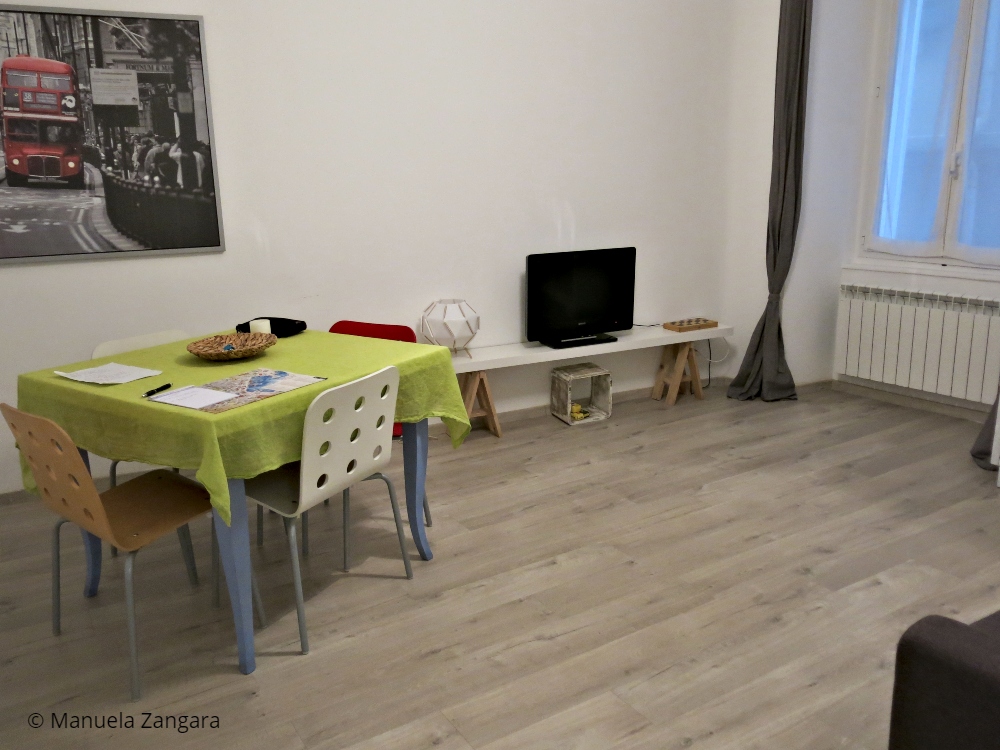
There were also 2 bathrooms.


It is very clean and practically new. Highly recommended – I think a place like that right in the centre of town is hard to beat! And with so many restaurants and cafés just downstairs – Caffè degli Specchi and Bianco’s included!
The owner was very friendly, helpful, and kind. She’s the one who recommended Bianco’s to us.
You can park your car at a security parking called San Giusto, a 5-minute walk from the apartment.
If you decide to visit Trieste, look no further: stay at In Piazza for an AMAZING experience.
CONCLUSION
I highly recommend a visit to Trieste. It is a very special city, like no other I’d say. It’s definitely in Italy, however, you can tell it’s not like any other Italian city.
It’s also a nostalgic city, full of charm and history and it is extremely beautiful.
If you have any questions, leave a comment and I will be happy to help out!
Don’t forget to PIN this post on Trieste!

RESOURCES ON MSM
TRAVEL
Trapani, Erice, and Segesta – Italy Guide
San Vito lo Capo – Italy Guide
Cividale del Friuli – Italy Guide
FOOD
Maiale al Latte – Purcit Tal Lat
Chifeletti – Kipfel – Kifelček



















I can’t express how happy to have this post. I was born in Isola D’Istria and I haven’t been back to the area since we left in 1951. How I wish I could go see where my few relatives live – also where I was born. Thank you. I’m saving this post so I can look at it again and again. Un abbraccio forte.
Ciao Marisa! THANK YOU for taking the time to leave this comment. It was really touching. As a migrant myself, I know how nostalgic it can get. We absolutely loved that area of Italy. I didn’t know it well either and we were really impressed. Trieste itself is a little gem! We were hoping to go back next year, but who knows if it’s going to be possible… <3 Un abbraccio anche per te!